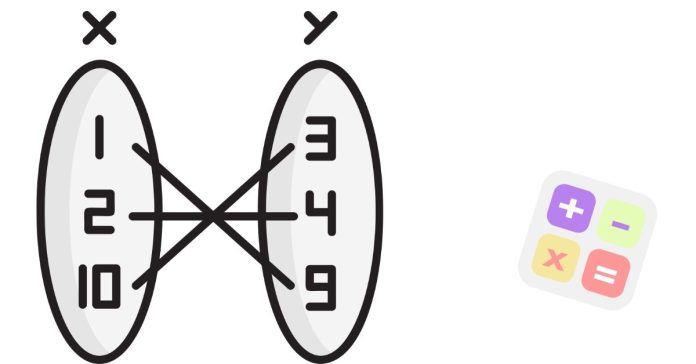Discrete Mathematics is the branch of mathematics that deals with distinct and separate values rather than continuous quantities. It is fundamental in computer science, as it provides tools and concepts for dealing with structures such as graphs, logic, sets, and algorithms.
Key Topics in Discrete Mathematics
- Set Theory
- Logic and Propositional Calculus
- Functions and Relations
- Combinatorics
- Graph Theory
- Algorithms and Complexity
- Number Theory
- Mathematical Induction
- Boolean Algebra
Let’s dive into these topics with brief explanations and examples.
1. Set Theory
A set is a collection of distinct objects. In discrete mathematics, sets are fundamental building blocks.
Basic Operations:
- Union ( ∪ ): The union of two sets is the set of elements that are in either set.
- Intersection ( ∩ ): The intersection of two sets is the set of elements that are in both sets.
- Difference ( − ): The difference of two sets is the set of elements that are in the first set but not in the second.
- Complement: The complement of a set is the set of all elements not in the set.
Example:
Let’s say:
- A={1,2,3}
- B={3,4,5}
- Union: A∪B={1,2,3,4,5}
- Intersection: A∩B={3
- Difference: A−B={1,2}
- Complement: The complement of AA (relative to some universal set UU) would be U−AU – A.
2. Logic and Propositional Calculus
Logic involves reasoning about propositions, which are statements that are either true or false.
Basic Logic Operators:
- AND ( ∧ ): True if both operands are true.
- OR ( ∨ ): True if at least one operand is true.
- NOT ( ¬ ): Inverts the truth value.
- Implication ( → ): If the first statement is true, the second one must be true.
- Biconditional ( ↔ ): True if both operands have the same truth value.
Example:
If p and q are propositions, then:
- p∧qp is true only if both pp and q are true.
- p∨qp is true if either pp or q is true.
Truth Tables:
For a statement like p→qp:
| pp | q | p→qp |
|---|---|---|
| T | T | T |
| T | F | F |
| F | T | T |
| F | F | T |
3. Functions and Relations
A function is a relation that associates each element of one set (domain) to exactly one element of another set (codomain).
- Injective (One-to-One): Every element of the domain is mapped to a distinct element in the codomain.
- Surjective (Onto): Every element of the codomain is mapped by some element from the domain.
- Bijective: A function that is both injective and surjective.
Example:
Let’s define a function f:R→Rf: \mathbb{R} \to \mathbb{R} where f(x)=2xf(x) = 2x.
- This is a bijection because it is both injective (no two values of xx map to the same value) and surjective (every value of R\mathbb{R} is covered).
4. Combinatorics
Combinatorics is the study of counting, arrangement, and combination of objects.
- Permutations: The number of ways to arrange nn objects is n!n! (factorial).
- Combinations: The number of ways to choose kk objects from nn objects is (nk)=n!k!(n−k)
Example:
How many ways can you arrange 3 books from a set of 5 books?
- Permutations: P(5,3)=5!(5−3)!=60
- Combinations: (53)=5!3!(5−3)!=10
5. Graph Theory
Graph theory is the study of graphs, which are mathematical structures used to model pairwise relations between objects.
- Graph: Consists of vertices (nodes) and edges (connections between nodes).
- Directed Graph (Digraph): Each edge has a direction.
- Weighted Graph: Each edge has a weight or cost associated with it.
Example:
A simple graph with 3 nodes:
- Nodes: {A,B,C}
- Edges: {(A,B),(B,C),(A,C)}
You can use graphs to model networks like the internet, social networks, or transportation systems.
6. Algorithms and Complexity
Algorithms are step-by-step procedures for solving problems, and complexity is the study of how the time or space requirements of an algorithm grow with the size of the input.
- Big-O Notation: Describes the upper bound of the time complexity.
- Example: O(n)O(n) represents a linear time complexity.
- Example: O(n2)O(n^2) represents a quadratic time complexity.
7. Number Theory
Number theory focuses on the properties of integers, such as divisibility, prime numbers, and modular arithmetic.
- Prime Numbers: Numbers that are divisible only by 1 and themselves.
- Greatest Common Divisor (GCD): The largest number that divides both integers.
- Modular Arithmetic: Deals with remainders when dividing numbers.
Example:
- GCD of 36 and 60 is 12.
- 36mod 7=136 \mod 7 = 1, because when 36 is divided by 7, the remainder is 1.
8. Mathematical Induction
Mathematical induction is a technique to prove statements about natural numbers. It consists of two steps:
- Base Case: Prove the statement is true for the smallest value.
- Inductive Step: Assume the statement is true for some value kk, and then prove it is true for k+1k + 1.
Example:
Prove that the sum of the first n positive integers is n(n+1)2
- Base Case: For n=1n = 1, 1=1(1+1)2, which is true.
- Inductive Step: Assume it’s true for n=k. Show it holds for n=k+1: 1+2+⋯+k+(k+1)=k(k+1)2+(k+1)=(k+1)(k+2)2 Therefore, the formula holds for k+1k + 1, completing the proof.
9. Boolean Algebra
Boolean algebra is the mathematical study of logic, specifically binary variables that can take values 0 (false) or 1 (true).
- AND, OR, NOT: The basic logical operations.
- Laws: Identity Law, Dominance Law, De Morgan’s Law, etc.
Example:
For the Boolean expression,
- A∧(A∨B)=AA
Conclusion
Discrete mathematics is an essential area of mathematics for computer science and related fields. Topics such as set theory, graph theory, logic, and combinatorics help in understanding the structure and behavior of algorithms, data structures, and computations. Understanding discrete mathematics will give you a solid foundation for many aspects of computer science, including databases, cryptography, networking, and more.


